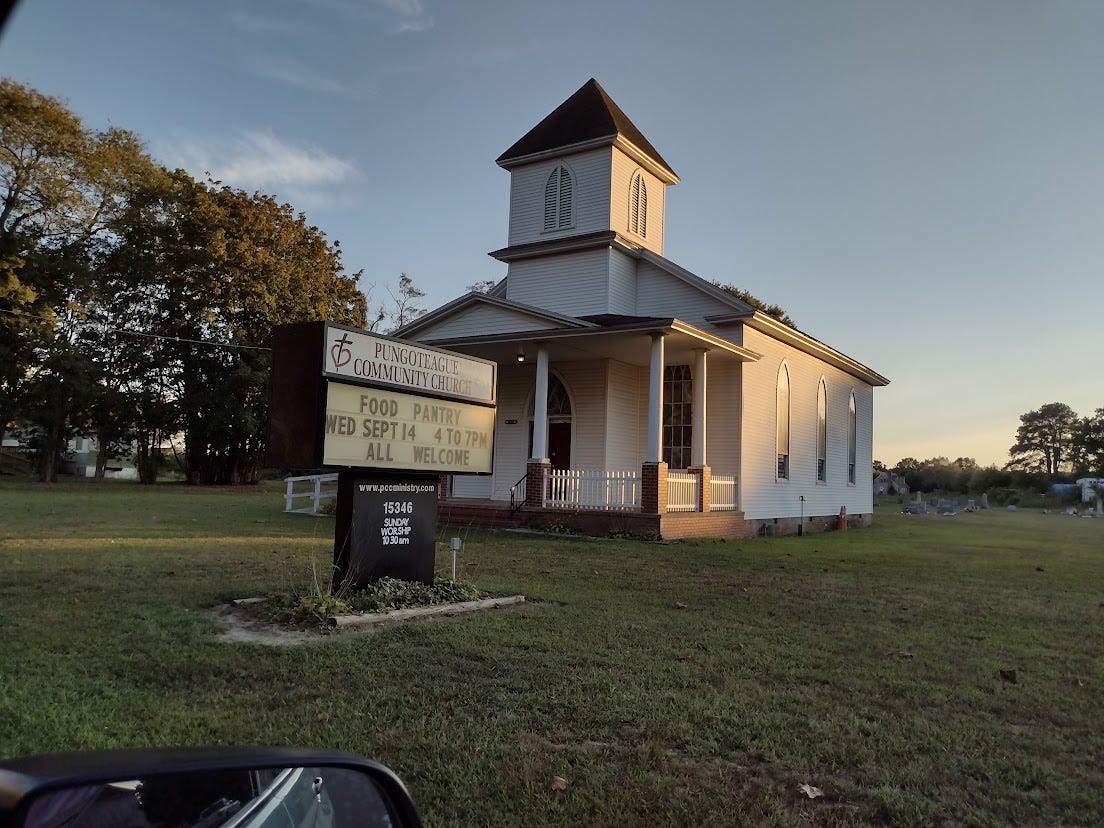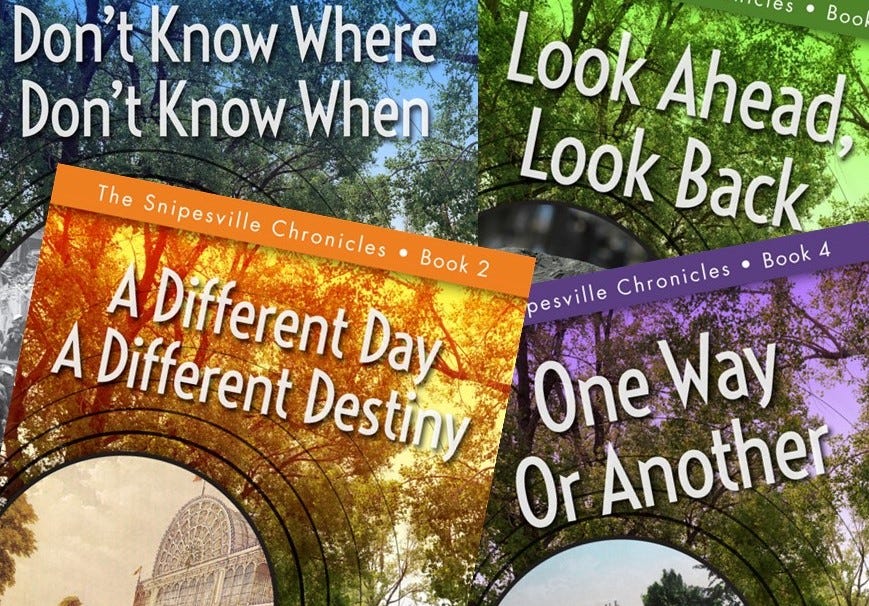(Non-)Founding Fathers. And Founding Merch!
NON-BORING HISTORY Considering Land and Homes, Plus NBH T-Shirts and Mugs Now Available, with a Special Discount for Nonnies!
How Long is This Post? About 3,000 words or 15 minutes
Dear Nonnie Friend,
I’m still in recovery mode from my historical trip with Hoosen, but I wanted to share with you today some additional moments from the road. Find out what happened when I went in search of a free Black planter who once lived in 17th century Virginia and Maryland! Marvel at my weird visit to the slave labor camp/gracious home (note the schizophrenia) of a man whose claim to fame is that he refused to sign the Declaration of Independence—and I’m not being sarcastic. Did I mention that this place is in Delaware? Yes, a Northern state. Yes, I said slavery.
I am also delighted to announce that all the VERY FIRST Non-Boring History merch is now available in time for the holidays, including T shirts and books! Details below!
Jiggity Jig
Hoosen and I are back at Non-Boring House, in our own space, enjoying home-cooked foods, and to the great regret of the NBH Gnomes, who clearly have enjoyed having the run of the place, judging by all the empty beer bottles.
Ours was a taxing but a very successful historical road trip. I'm happy to report I'm still writing posts on our rummages through Maryland, North Carolina, Indiana, and Ohio, and you'll see them over the next few weeks, woven among new Annette Tells Tales posts, a fun chat about museum visits with digital nomads and savvy travelers Brent and Michael, who write Brent and Michael Are Going Places on Substack, and more adventures, interpretations of history, and whatnot.
Merch Now Available (and a Discount for Nonnies!)
I'm also thrilled to report to US and Canadian readers that we now have SOLUTIONS (as we annoyingly say these days) to your Christmas stocking stuffer needs: Tasteful and high-quality NBH bistro-style mugs AND comfy (and preshrunk) NBH T-Shirts.
PLUS you can pick up a complete discounted set of my Snipesville Chronicles novels, signed to you or your recipient!
This "Clever and Charming Time-Travel Adventure" (Kirkus said it, not me) was originally aimed at young readers (pitched to the Harry Potter audience) but soon also picked up enthusiastic adult readers. Did I mention that Kirkus also praised my “historical detail and sheer sense of fun”?
All these goodies are available for purchase for US and Canadian readers at Annette Laing.com, and the Gnomes have just announced that they have figured out how to discount, so paid subscribers to NBH get 10% off with the promo code at the end of this post!
International Folks? The Gnomes are working on figuring out shipping options that cost less than a king’s ransom. Thank you for your patience.
His Own Ground
Longtime readers may remember Anthony Johnson, the free black 17th century tobacco planter, a founding father of free Black America, whom historians Timothy Breen and Stephen Innes wrote of in Myne Owne Ground: Race and Freedom on Virginia's Eastern Shore, 1640-1676. I riffed on this classic book in A Black Craigslist, an early piece here at Non-Boring History, and that post is also available as a podcast.
This trip, I decided to go in search of Anthony Johnson, even though I already figured there was nothing to see. I wanted to at least stop and take a look at the 21st century version of the 17th century landscape he once inhabited, as an African who had become free in a Virginia that wasn’t yet set up with laws to mandate he be enslaved for life.
And, of course, like an idiot, I went to the wrong place.
This is a rookie error for a historian. I know better. But it was late in the day, it was an impulsive decision to go see where Johnson lived, and other pitiful excuses. When I saw we were in Accomack County, on Virginia’s Eastern shore (the peninsula separated from the rest of the state by the massive Chesapeake Bay), I got excited. Breen and Innes called Johnson “the patriarch of Pungoteague Creek” in their book, right? I set Emily (our navigator lady who, of course, has a British accent) to Pungoteague, Virginia. I snapped a few photos (there’s not much to it, it’s a village), and left again.
We were in the wrong place. Johnson’s lands were in the area of Pungoteague Creek, a good five or six miles away from the town of Pungoteague. Rats.

Oh, well. At least you get the idea. The photo I took below next to Pungoteague (the town) is pretty much what the farmlands of Accomack County on Virginia’s Eastern Shore look like, anyway. There would have been more trees in Johnson’s day, I think (the historian says in her authoritative way to disguise the fact that she has no idea). But just knowing Anthony Johnson was once around here somewhere, that he probably traveled by or even through this land, was enough to remind me that he wasn’t just words on an an old manuscript or in a book: He was real, toiling on his own ground. Wherever it was.

The Debtors’ Prison
Hoosen had discovered on his phone that there was an 18th century debtors’ prison in Accomack County, and would I like to see it? Well, why not?
The debtors’ jail was actually built as a house for the local jailer right after the War of Independence. Forty years later, it was in a sorry state, but then someone discovered that Virginia state law didn’t actually require accommodation to be provided to the jailer, so I guess he was out of luck. A pity, I think: I am fascinated by jobs that come with places to live, and they seem to be vanishing today.
The law did, however, demand that debtors be jailed separately from other criminals (likely for their own protection), so that’s when this little building was converted into a debtors’ jail. The early 19th century American economy did not favor ordinary people, as the Smithsonian Museum of American History sort of explains. Debt was common, and an Accomack citizen stashed in the debtor’s jail waited for friends and family to bail him out.
The main jail is long gone, and this debtors’ jail is the oldest building in town, but how interesting to realize that across the street are today’s county courthouse, the probation department, and the copshop (That’s British, isn’t it? Police department). Two and a half centuries on, and this block of land is still criminal justice central.






